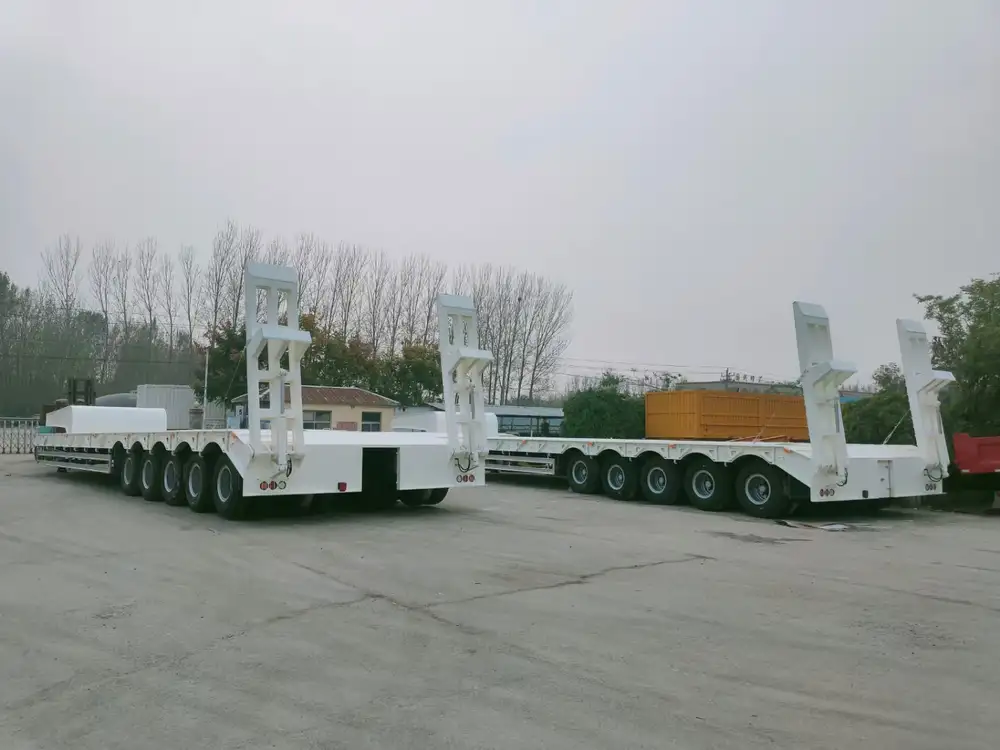Semi-trailers are the workhorses of the trucking industry, facilitating the transportation of goods across vast distances. With the substantial loads they carry, understanding the legal specifications, particularly the width, is crucial for manufacturers, operators, and owners alike. This article delves deep into the legal width of semi-trailers, explore regulations, and provide valuable insights for stakeholders in the logistics and transportation sectors.
Definition of a Semi-Trailer
A semi-trailer is a type of trailer that is designed to be towed by a truck or tractor unit. Unlike full trailers, semi-trailers are supported at the front by a hitch connected to the towing vehicle while the rear is supported by its own wheels, making them an essential component of modern freight transport.
Basic Structure of a Semi-Trailer
| Component | Description |
|---|---|
| Frame | The structural backbone that supports the load and connects with the towing vehicle. |
| Axles | Wheels are mounted on axles that bear the semi-trailer’s weight and provide stability. |
| Suspension System | A system designed to absorb shocks, providing better ride quality and load handling. |
| Cargo Area | Space for the goods being transported, often with specific dimensions depending on regulations. |
| Connection Mechanism | Includes the fifth wheel hitch that secures the trailer to the tractor unit. |

Legal Width Regulations for Semi-Trailers
General Width Standards
In the United States, the standard legal width for a semi-trailer is 8.5 feet (102 inches). This width applies to most states, but variations exist based on specific regulations and exemptions.
State-Level Variations
| State | Legal Width (Inches) |
|---|---|
| California | 102 |
| Texas | 102 |
| Florida | 102 |
| New York | 102 |
| Michigan | 96 (for certain vehicles) |
Some states may have allowances for wider loads under special permits, often requiring specific routes or conditions.

Width for Specific Trailer Types
Flatbed Trailers: Typically adhere to the general regulation of 102 inches but can carry oversized loads with special permits.
Reefer Trailers: Refrigerated trailers also conform to the 102-inch standard, though variations exist for models designed for certain commodities.
Container Chassis: Containers mounted on chassis may also follow traditional widths, yet variations can occur based on container specifications.
Significance of Legal Width Compliance
Compliance with legal width standards not only enhances safety but also facilitates smoother logistics and transportation operations. Adhering to these regulations:
Reduces Road Hazards: Wider trailers may encroach on adjacent lanes or pose risks on narrow routes, increasing the likelihood of accidents.
Avoids Fines and Penalties: Operations exceeding legal dimensions can result in hefty fines, which may disrupt business operations.
Promotes Efficient Traffic Flow: Uniformity in trailer widths allows for predictable traffic patterns, improving overall road efficiency.
Factors Influencing Maximum Width
Certain exceptional factors can justify wide-load permits, including:
Nature of Cargo: Bulky items or equipment that require a wider stance to transport safely.
Transporting Equipment: Specialized vehicles meant for unique loads may have different width allowances.

Guidelines for Measuring Trailer Width
Accurate measurement is critical to ensuring compliance. Below are steps to effectively measure a semi-trailer’s width:
Choose the Right Location: Always measure on a flat, well-defined surface away from any obstructions.
Using a Measuring Tape: Extend a sturdy measuring tape from the farthest point on one side to the farthest point on the opposite side.
Consider attachments and accessories: Include any structural components like fenders or extensions which may affect overall width.
Common Measuring Mistakes to Avoid
Ignoring Load Dimensions: Overlooking the cargo’s dimensions can lead to non-compliance.
Failure to Account for Tire Width: The width of tires could impact overall measurements, particularly with dual tire configurations.
Procedures Upon Overwidth Conditions

Securing a Permit
When a trailer exceeds the standard legal width:
Consult the Department of Transportation (DOT): Each state may have differing requirements for permits.
Provide Load Information: Include dimensions, weight, and route plans when applying for a permit.
Pay Required Fees: Permit fees vary based on the excess width and route selected.
Route Planning
Having an approved permit does not guarantee smooth transit. Here are essential considerations:
Low Bridges and Narrow Roads: Identify locations along the route that could pose risks.
Time of Travel: Plan travel during off-peak hours to minimize congestion.
Traffic Control Assist: In some states, escort vehicles may be required for exceptionally wide loads.
Legal Width of a Semi-Trailer: Key Points to Remember
- The most common legal width for semi-trailers in the US is 8.5 feet (102 inches).
- States may have specific regulations and allowances for oversized loads.
- Compliance is vital for safety, avoiding penalties, and ensuring traffic efficiency.
- Accurate measurement is critical, and proper permits must be obtained for loads exceeding legal dimensions.

Conclusion
Understanding the legal width of a semi-trailer is paramount for all parties involved in the transportation industry. From manufacturers to operators and logistics companies, knowing regulations ensures compliance, safety, and operational efficiency. Being proactive in adhering to these standards mitigates risks associated with transportation and contributes to smoother, more reliable freight movement across the highways.
Ultimately, for anyone involved in the logistics or transportation sectors, grasping the nuances of semi-trailer specifications—particularly width—enhances operational integrity and navigates the complexities of road regulations with confidence. For those seeking to transport oversized loads, understanding how to secure the necessary permits and plan routes accordingly is just as vital as knowing the standard regulations for legal widths.



